AEGIR
-
A school project where the goal was to create an area and guide players through a spatial experience
-
3 Months
-
— Level Design —
Conceptualisation
Greyboxing
— Blueprints —
Drone
Rotating Lights
Flashing Lights
Keycard
Doors
Main and Pause Menu functionality
— Technical Art —
Glowing Signs
Glowing Rocks
Hologram Effect
Pre-Production
Gathering references
We decided we wanted to try for a creepy and atmospheric environment for this project. After some discussion, we decided on a somewhat derelict underground mining facility. Hence, we started by looking for references - mostly from notable games like Bioshock and SOMA, as well as real life references. Other aesthetic references include fonts and camera work. We used Figma for this.
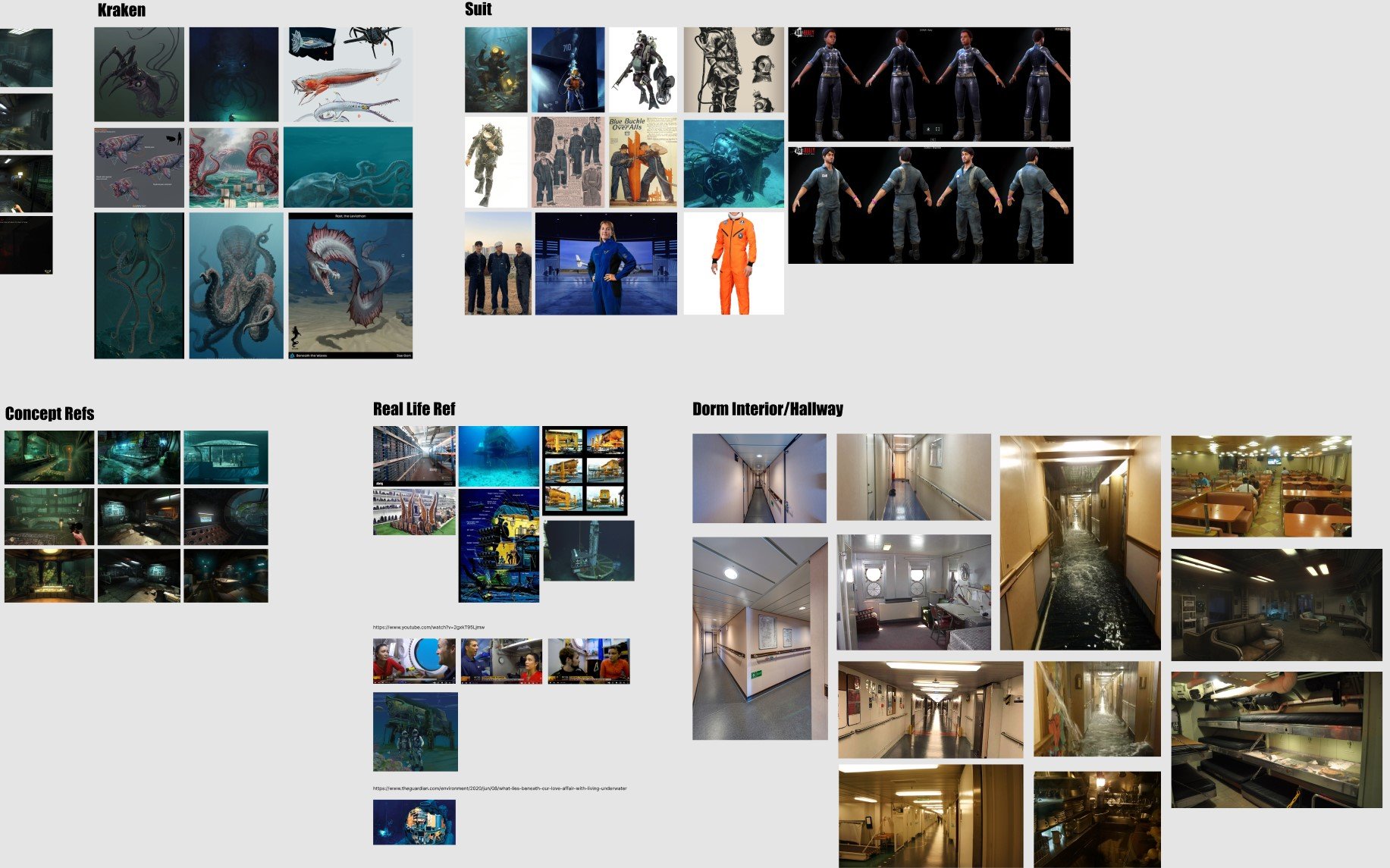


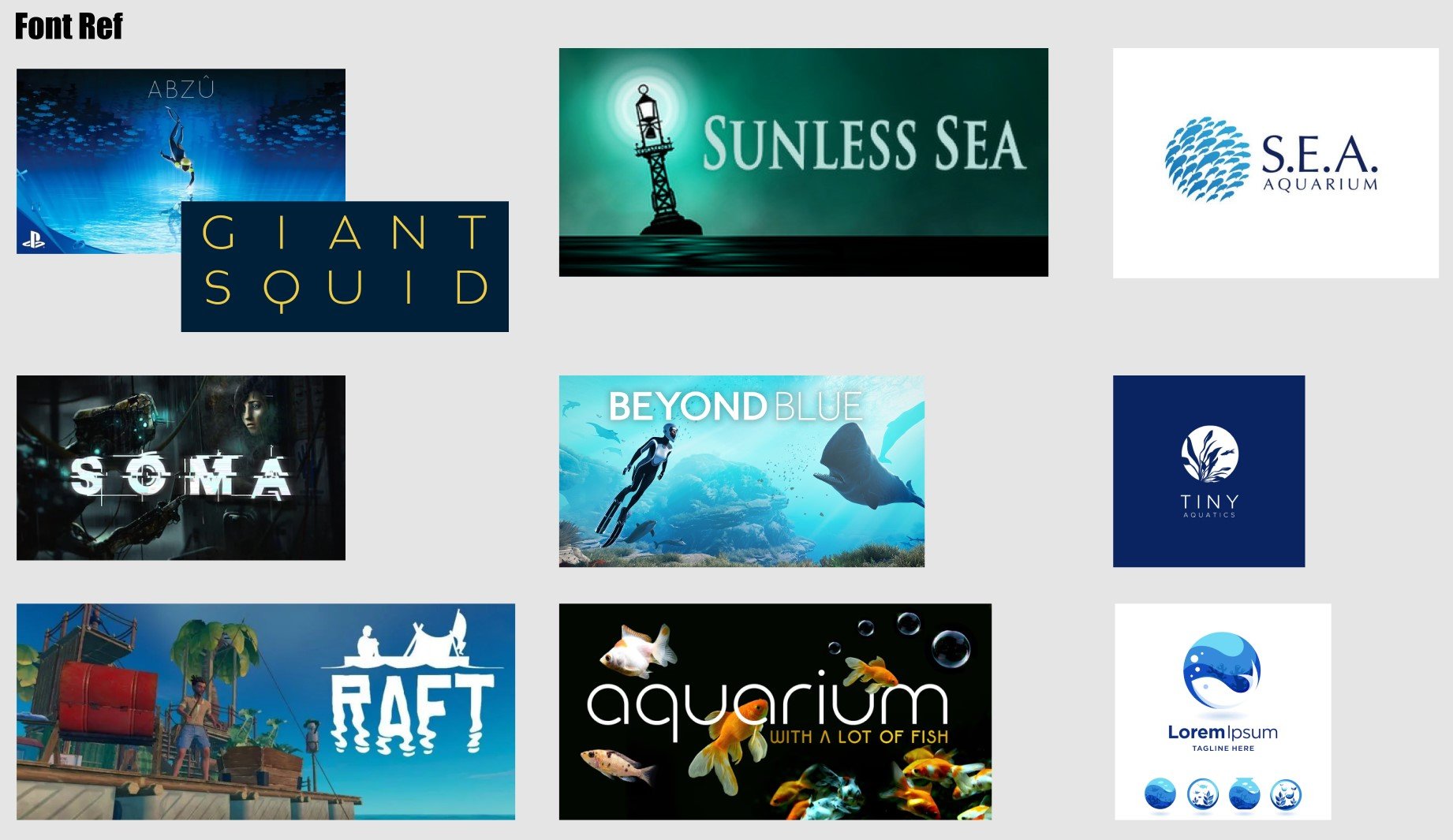
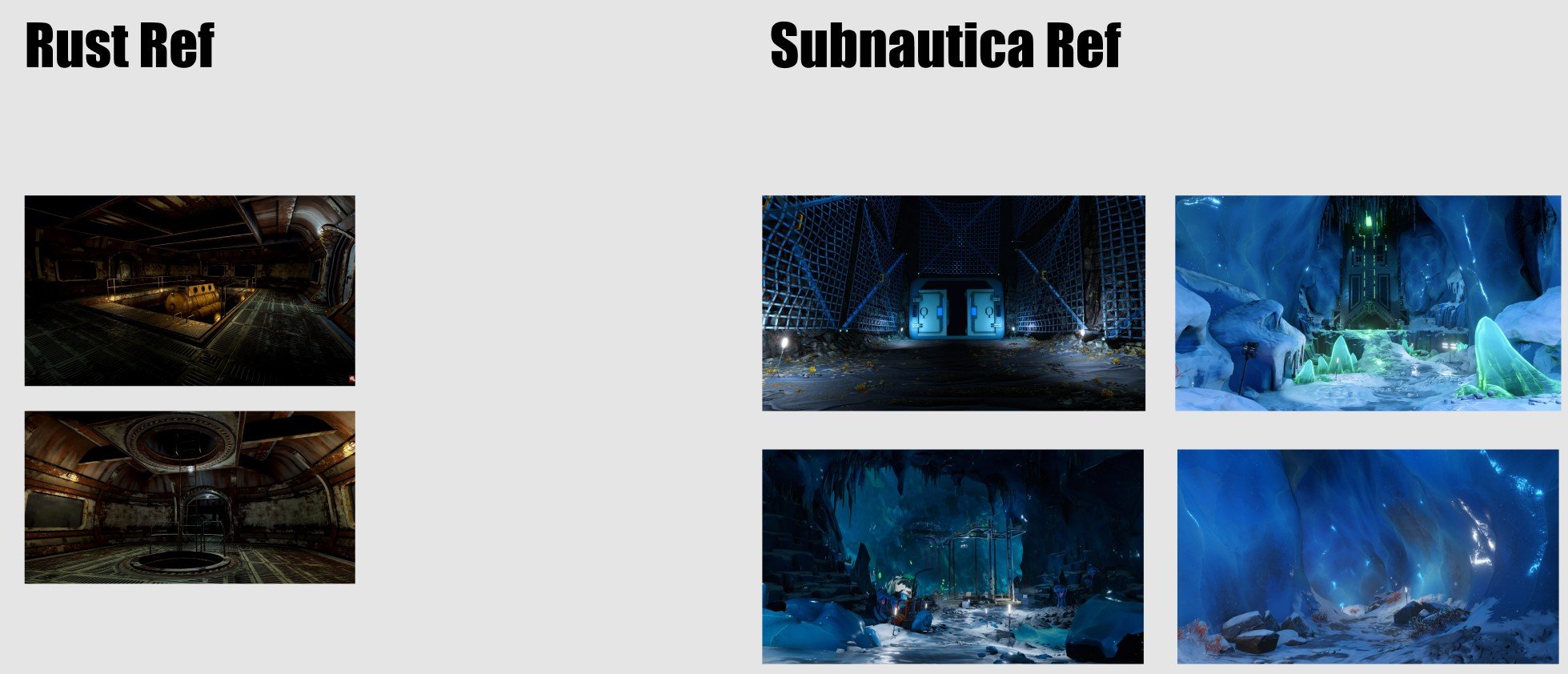
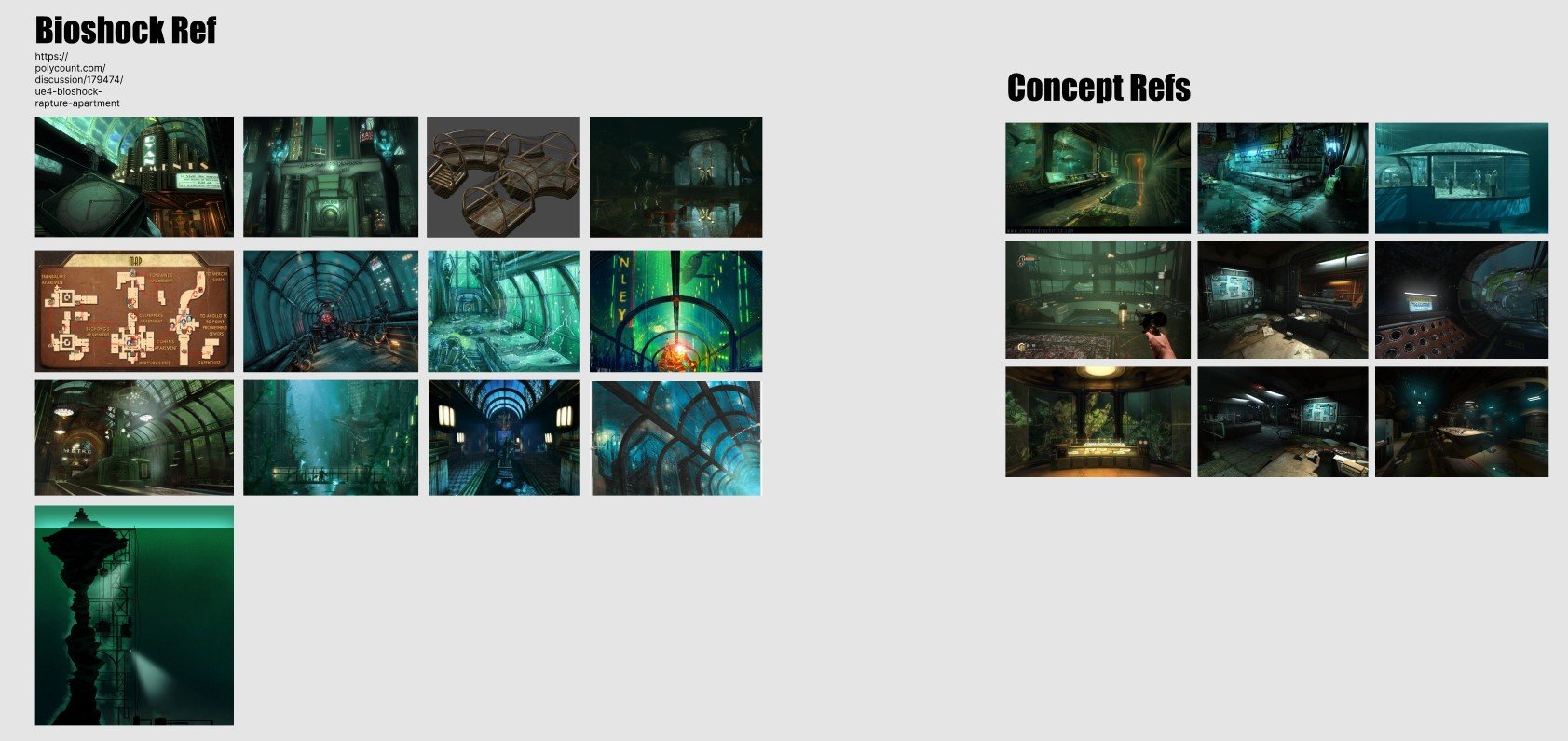
Level Design Process
The level went through a few iterations before we decided on a final layout.
There were a few key details we ironed out during this phase:
A good mix and pace of tight and claustrophobic spaces, as well as open and winding areas
Creating a landmark so they player can orient themselves easily.
Catering an enjoyable critical path and experience.
Deterring Progress
To ensure the player has seen and experienced more of the level, the player’s progress is halted by a locked door, requiring it them to retrieve a keycard before they can progress.
Branching Paths
When entering the open segment, the player can choose to either explore the left or right path.
On the path in teal, the player will run into the locked door first and have to first explore the office for the keycard. However, instead of forcing the player to backtrack, there is a path conveniently place for the player to reach the office easily. After which, they exit the other way and re-orient themselves with landmark to be back on their way to the locked door.
On the path in green, the player first discovers the keycard, as they continue on their path, the reach the warehouse and conveniently unlock the newfound door.
Both paths successfully make the player explore the upper deck.
Landmark (Kraken in the tube)
As we wanted to create winding paths and verticality, it was important to create a noticeable landmark so players can always use it to orient themselves to go where they want to. For this project, it was the use of the Kraken in the tube!
Hence, in the image, during the small open segment in the game, the Kraken is always in view whenever they re-enter the main lobby area from another area.
Colour Progression - Intensity curve
We also used a colour progression to bring a greater emphasis to change through-out the level.
The level starts out dark and black, creating an uneasy tension and shrouding the player in unknown.
Then to a sea-foam blue, contrasted by the orange of the kraken tube.
There is short segment in a claustrophobic corridor drenched in red to create fear.
And finally short breather, back to a dull green before the final reveal of the bigger kraken.
Production
Level Blockout
Onto Unreal! We started by blocking out the levels with greyboxes, using the player model to carefully keep in mind the scale of the player and relevant environment. We also created some greybox props to try and create the feel that we hoped to achieve.
After which, we held a few playtest sessions to gather feedback and tweaked the level based on that.
And finally, we sourced for free assets online to populate the scene with! Exciting!
Here’s a final walkthrough video of the level:
Blueprints
Here’s some blueprints stuff I did. (Click the gifs to see more details!)
Tech Art
Something that is completely new to me, but I had a lot of fun learning!
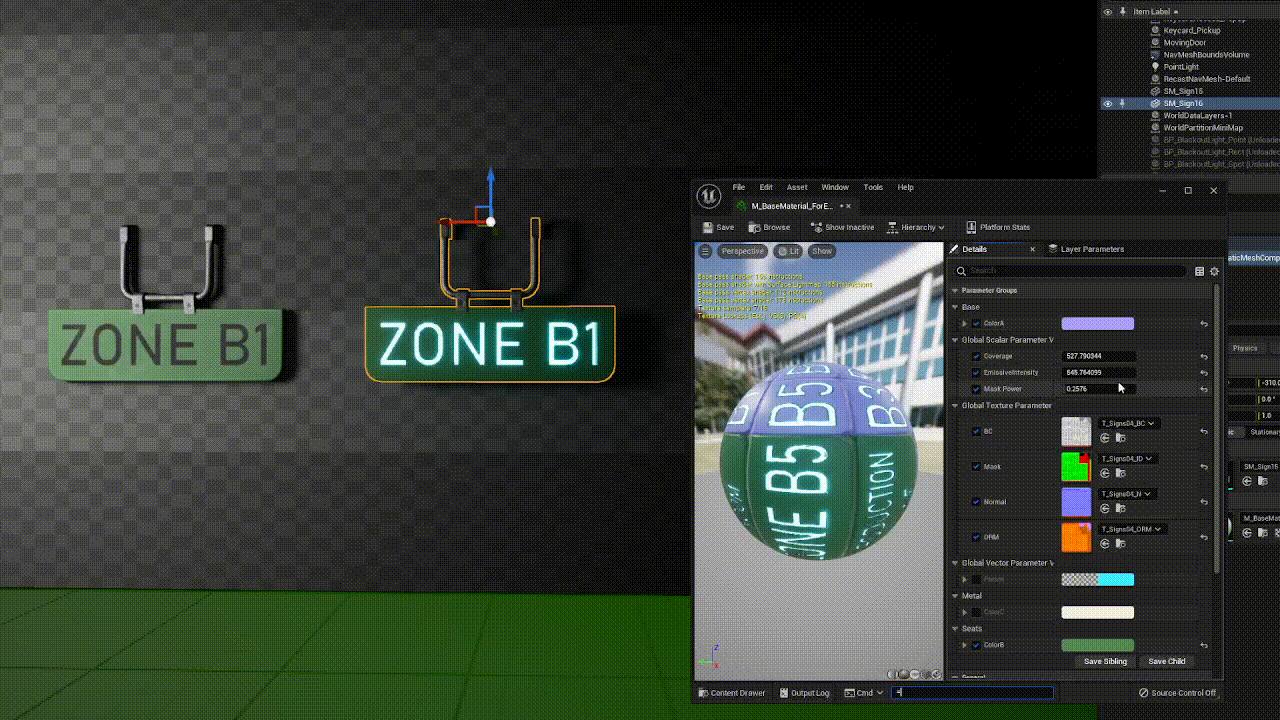

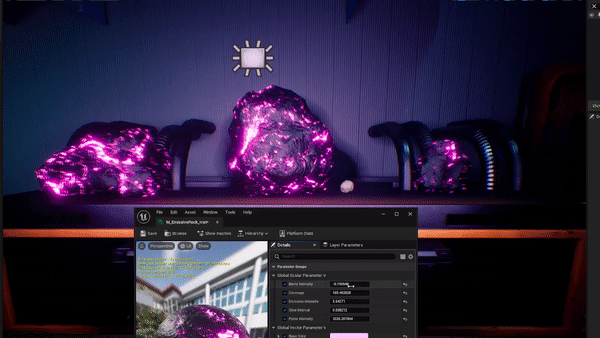
Reflections
Overall, I consider the project to be a huge success and had a lot of fun learning Unreal Engine 5!
Lumen and Nanite does wonders for performance. Not having to bake lights was also a nice convenience.
It is also my first foray towards tech art.
There were some stuff we unfortunately could not get working, like the Fluid Simulation, where we wanted a room to completely flood.
The visual silence in the scene could have also been alleviated much better by adding more moving elements, such as pieces of paper flying around, dust floating, or dangling wire pieces.
Moving forward, I hope to explore the other technologies Unreal has to offer, such as the Sequencer, Animations and Niagara System.
We also managed to try out a real-time collaborative plug-in! Interesting stuff, but is unfortunately way too buggy at the moment. Looking forward to more reliable real-time collaborative game dev in the future!























